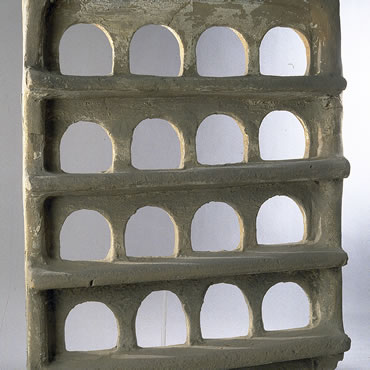10. Animal husbandry

Animal remains and artistic portrayals show that the inhabitants of Pompeii were quite familiar with animal species, and bred them with great skill. The many dogs in the city served for hunting, as guard dogs, and as pets. There were cattle, hog, goat, and sheep farms, but some very specialized animal husbandry practices were also developed, such as those for raising poultry, doves and dormice. Cats were imported into the city from Africa, while peacocks came from the Near East.
The Romans' fish and mollusk farms were extraordinary from a technical standpoint.
Animal husbandry was a lucrative activity. Normally it was practised in the countryside, but smaller animals were also raised in the city. The Romans had a good understanding of breeds, which they selected by crossing.
Cattle were used for plowing, for pulling wagons, and for dairy production. The local breed was of white cattle, which were fairly small in size. Horses were used for war, in competitions, in agricultural work, and for hauling. They had elaborate harnesses, and their hooves were protected by pieces of metal or rope. Sheep were raised for their production of wool and milk, and cheese. Pigs were in a kept semi-free state, and sows often bred with wild boar. Beekeeping was widespread, and bees furnished the Romans with wax and honey, the latter used for wine and for the preservation of foods.
The large animals were raised in stalls equipped with mangers and drinking troughs. Slaughter took place in the cattle-market. Bones were used for making household objects and toys, while meat, which was not consumed in great quantities, was salted or smoked.
Pompeians kept hens, which furnished meat and eggs, pigeons, raised in special pigeon-lofts, and roosters, often destined for cockfights. In suburban villas geese and ducks were kept in pens. Among the exotic birds, peacocks were the most common.
Turtles were often found in gardens, and doormice were raised for food in specially designed containers. The most common pets were dogs, which were used both for the hunt and as guard dogs.
Fish were raised in tanks, which were carved from rock outcrops in the sea, or constructed with cement and lined with a mortar which made them water-tight. The moray and dory were the fish that were raised most commonly. Mollusks, especially mussels and oysters, were grown on clay supports immersed in the water. Fish was preserved by salting; the liquid drained off the salted fish was used to make garum, a widely-used and very popular sauce.

